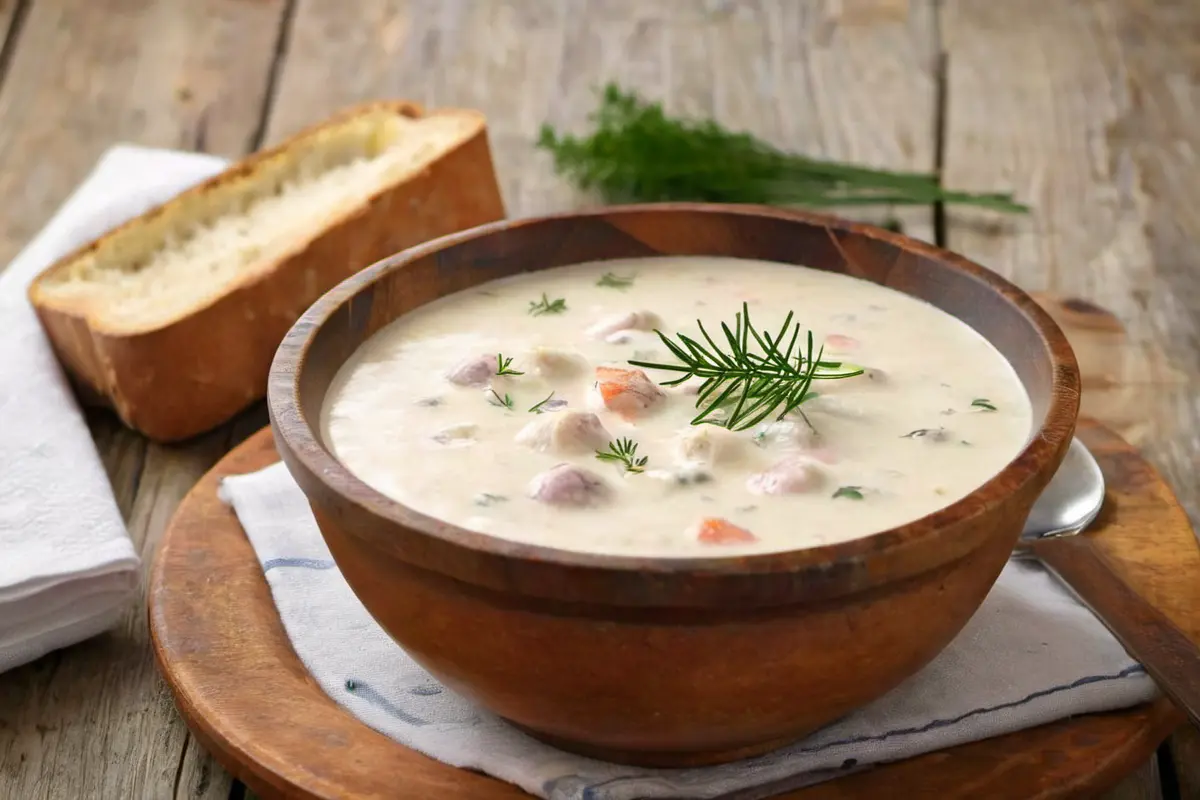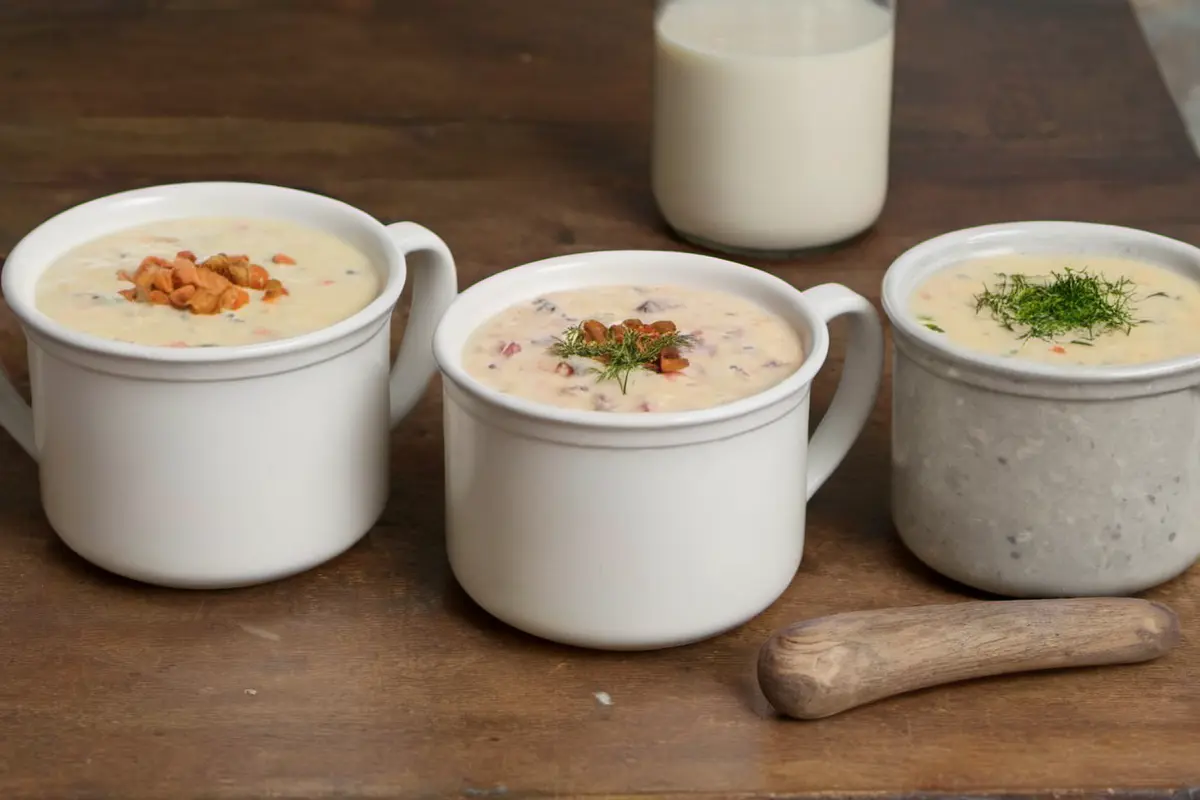Chowder enthusiasts often wonder: why use evaporated milk in their favorite soup? This article dives deep into the benefits of using evaporated milk to achieve that creamy, rich texture that makes chowder a beloved dish. From the historical roots of this culinary choice to practical cooking tips, we’ll explore every aspect of using evaporated milk in chowder. Whether you’re a seasoned chef or a home cook, understanding the advantages of evaporated milk can transform your chowder from good to great. So, let’s get into the creamy details!
Understanding Evaporated Milk
Why Use Evaporated Milk in Chowder?
Why, indeed, should one opt for evaporated milk in chowder? Evaporated milk, with its concentrated flavor and creamy texture, enhances the body of the chowder without adding the extra fat that cream typically would. It’s a fantastic way to indulge in rich, decadent chowder without compromising on health.
First off, evaporated milk is just regular milk minus about 60% of its water content. This reduction process intensifies the flavor and increases the milk’s shelf life significantly. Now, when you add this concentrated milk to chowder, it not only thickens the soup but also imparts a velvety smoothness that is hard to achieve with regular milk.
Moreover, evaporated milk is a versatile ingredient. It’s not just about the thickness; it also adds a subtle sweetness that balances the savory notes of the seafood or other chowder ingredients. This balance is crucial, as it enhances the overall flavor profile of the dish.
But here’s another kicker: evaporated milk can stand up to high cooking temperatures without curdling. This is a common issue with fresh milk, which can split under intense heat. Therefore, evaporated milk is not only more forgiving but also ensures a smoother cooking process.
In addition, using evaporated milk can be a nod to traditional cooking methods. Many regional recipes, especially from New England, where chowder is almost a cultural icon, historically used evaporated milk. By choosing evaporated milk, you’re embracing a piece of culinary heritage, adding authenticity to your dish.
So, incorporating evaporated milk in chowder is not just about following a recipe; it’s about understanding the ingredient’s impact on texture, flavor, and cooking stability. And let’s be honest, who doesn’t love a thicker, creamier chowder that’s also a bit healthier?
Next, we’ll dive into the historical and cultural significance of evaporated milk in chowder recipes, exploring how this ingredient shaped the traditional flavors of this iconic dish. Stay tuned for a creamy journey back in time!
Historical and Cultural Significance
The Role of Evaporated Milk in Traditional Chowder Recipes
Delving into the past, the use of evaporated milk in chowder is not just a modern culinary trick; it’s steeped in tradition. This ingredient has played a pivotal role in the development of chowder recipes, particularly in regions where dairy products were less accessible or perishable.
Historically, chowder began as a fisherman’s meal. The early recipes were simple, using the day’s catch, and often did not include dairy. However, as chowder evolved, especially in New England, cooks began incorporating milk to add richness. Evaporated milk became popular because it could withstand long cooking times and did not require refrigeration, making it ideal for use on ships and in remote coastal communities.
Moreover, evaporated milk offered a consistency that fresh milk could not guarantee. Its use in chowder helped standardize the texture and flavor of this dish across different kitchens and cookbooks, contributing to its identity as a regional staple. Indeed, the creamy texture of today’s chowder owes a lot to the historical use of evaporated milk, which provided a rich base that complemented both the fish and vegetables perfectly.
Furthermore, the cultural impact of evaporated milk in chowder recipes highlights a broader narrative of adaptation and innovation. Communities adapted their cooking practices to the resources available, using evaporated milk as a durable, stable alternative to fresh milk. This adaptability is a testament to the ingenuity of early chowder makers, who crafted delicious meals under challenging conditions.
Today, the inclusion of evaporated milk in chowder recipes continues to echo these traditions. It connects modern cooks to the historical roots of the dish, adding a layer of cultural significance to each spoonful. By using evaporated milk, you’re not only choosing an ingredient that enhances flavor and texture but also honoring a piece of culinary history.
In the next section, we’ll explore the specific culinary benefits of evaporated milk in chowder, focusing on how it enhances the dish’s creaminess and flavor. Join us as we uncover the secrets to making your chowder irresistibly smooth and delicious!


